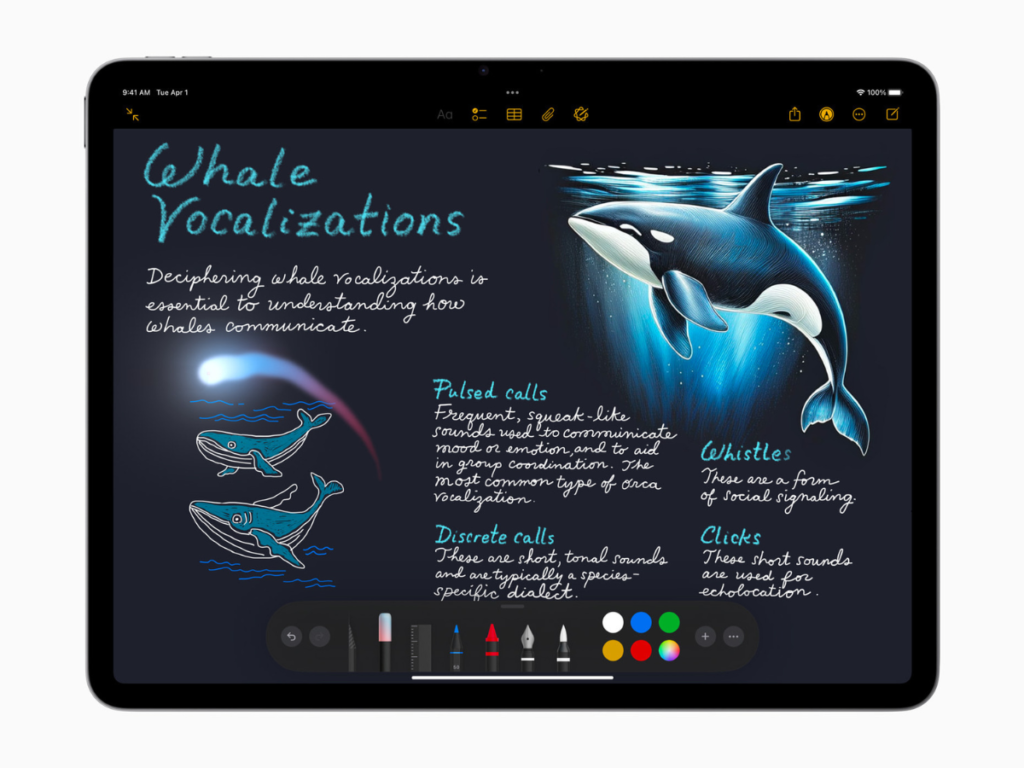Apple has officially launched the highly anticipated update to its iPad Air series, arriving sooner than expected. The refreshed iPad Air features the powerful M3 chip, making it a formidable competitor in the tablet market. It is available in two sizes: the 11-inch model starts at USD $599, while the larger 13-inch variant begins at USD $799.
Pre-orders for the new iPad Air begin on March 5th, with a broader release set for March 12th. In addition to the tablet, Apple is launching the Magic Keyboard for iPad Air, converting the device from a simple entertainment tool into a lightweight touchscreen laptop alternative that’s ideal for both work and play.
The iPad Air runs on the M3 chip, which includes an 8-core CPU, a 9-core GPU, and a 16-core NPU, enhancing performance and Apple Intelligence features. It comes with various storage options ranging from 128GB to an impressive 1TB, meeting diverse user requirements. Additionally, the 8GB of RAM allows for seamless multitasking and smooth operation of demanding applications.
Apple also announced the new iPad Air and introduced an upgraded version of the entry-level iPad, which now features double the initial storage at 128GB. This refreshed model is powered by the A16 chip, providing a 30% boost in performance compared to its predecessor, which utilized the A14 chip. Though it may not represent the most advanced technology available, the A16 brings substantial enhancements, ensuring a quicker and more responsive experience for daily activities.
The updated iPad will be available starting March 12, with a starting price of USD $349 for the base model.

| Feature | iPad (2025) | iPad Air (2025) | iPad Pro (2024) |
| Price | From $399 | From $799 | From $1,099 |
| Display | – 11” IPS PED display – 2360 x 1640 resolution – 60Hz refresh rate | – 11” or 13” IPS LED display – 11”: 2360 x 1640 resolution – 13”: 2732 x 2048 resolution – 60Hz refresh rate | – 11” or 13” Tandem OLED display – 11”: 2420 x 1668 resolution – 13”: 2752 x 2064 resolution – 120Hz refresh rate |
| Weight | From 477 grams | From 460 grams | From 444 grams |
| Internals | – Processor: A16 – RAM: 4GB – Storage: 128GB, 256GB, 512GB | – Processor: M3 – RAM: 8GB – Storage: 128GB, 256GB, 512GB, 1TB | – Processor: M4 – RAM: 8GB, 16GB – Storage: 256GB, 512GB, 1TB, 2TB |
| Networking | – 5G (on select models) – Wi-Fi 6 – Bluetooth 5.3 | – 5G (on select models) – Wi-Fi 6e – Bluetooth 5.3 | – 5G (on select models) – Wi-Fi 6e – Bluetooth 5.3 |
| Camera | – Front: 12MP – Rear: 12MP wide – Can record up to 4K@60fps – Can record slow-motion up to 1080p@240fps | – Front: 12MP – Rear: 12MP wide – Can record up to 4K@60fps – Can record slow-motion up to 1080p@240fps | – Front: 12MP – Rear: 12MP wide – Can record up to 4K@60fps – Can record slow-motion up to 1080p@240fps |
| Battery | Unknown | 7,606mAh | 8,160mAh |
| Other Features | – Touch ID – USB-C port – Supports Apple Pencil USB-C | – Touch ID – USB-C port – Apple Intelligence – Supports Apple Pencil Pro | – Face ID – Thunderbolt-capable USB-4 Type-C port – Apple Intelligence – Supports Apple Pencil Pro |

When it comes to deciding whether an upgrade can be straightforward with the new iPad models, especially the iPad Air (2025). Featuring the M3 chip and 8GB of RAM, the iPad Air delivers significantly improved speed and efficiency compared to its predecessor. This makes it an ideal choice if you want a tablet that excels at multitasking, creative applications, and casual gaming. While those with a recent iPad, like the previous iPad Air, may not notice dramatic performance changes, users on older versions will find this upgrade offers a notably smoother and more versatile experience.
On the other hand, for those considering the iPad (2025), the decision may hinge more on your intended use. With its updated A16 chip and a starting price of just $399, it serves as a solid option for everyday tasks like browsing, watching content, and light productivity. However, it’s important to acknowledge that, while the iPad (2025) offers decent performance improvements, it’s still more of a casual-use tablet compared to the more powerful iPad Air and iPad Pro. If you need a device for more demanding tasks or better overall performance, the Air or Pro models are worth considering.

The iPad Pro (2024) is the top choice for optimal performance. Featuring the M4 chip, a 120Hz OLED display, and up to 2TB storage, it offers an exceptional tablet experience for power users. Ideal for professional photo and video editing, graphic design, or productivity, the iPad Pro justifies its premium price. However, its advanced features may be excessive for most users unless they need a device for intensive tasks.
In my personal opinion, if you use an iPad as your primary work device, the iPad Air (2025) is definitely worth considering. The M3 chip represents a significant leap in efficiency and speed, and with 8GB of RAM, it’s more than capable of handling heavy multitasking. The price sits nicely between the entry-level iPad and the premium iPad Pro, making it the perfect choice for users who want power without the hefty price tag. That said, if you just need a tablet for occasional use, watching shows, and browsing the web, the iPad (2025) is likely sufficient for your needs and offers excellent value at a more affordable price.
In the end, your choice to upgrade depends on how much you use your tablet and the tasks you expect it to handle. If you seek outstanding performance, the iPad Air (2025) offers an ideal mix of power and affordability, whereas the iPad Pro (2024) is perfect for users who demand nothing but the best.












